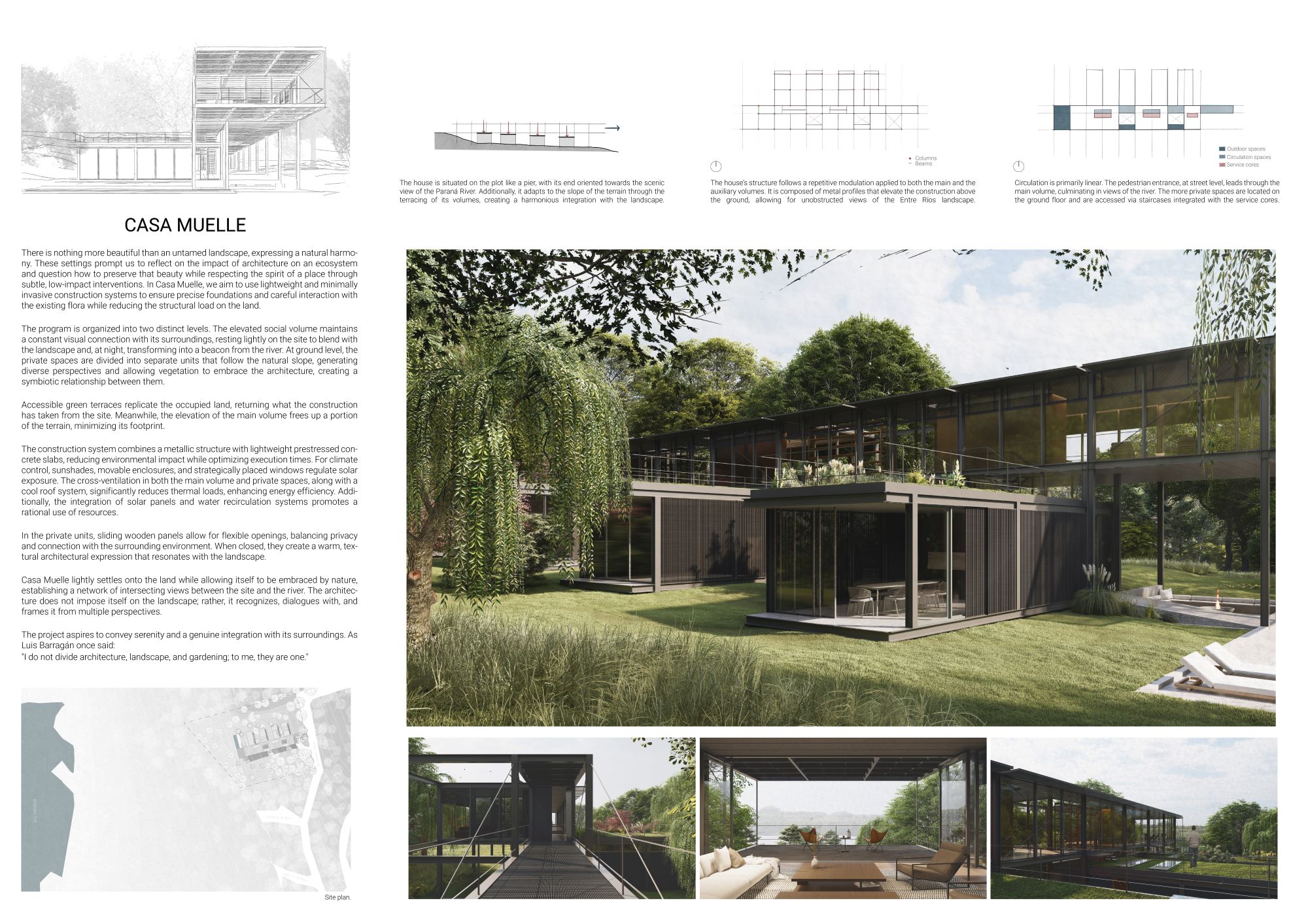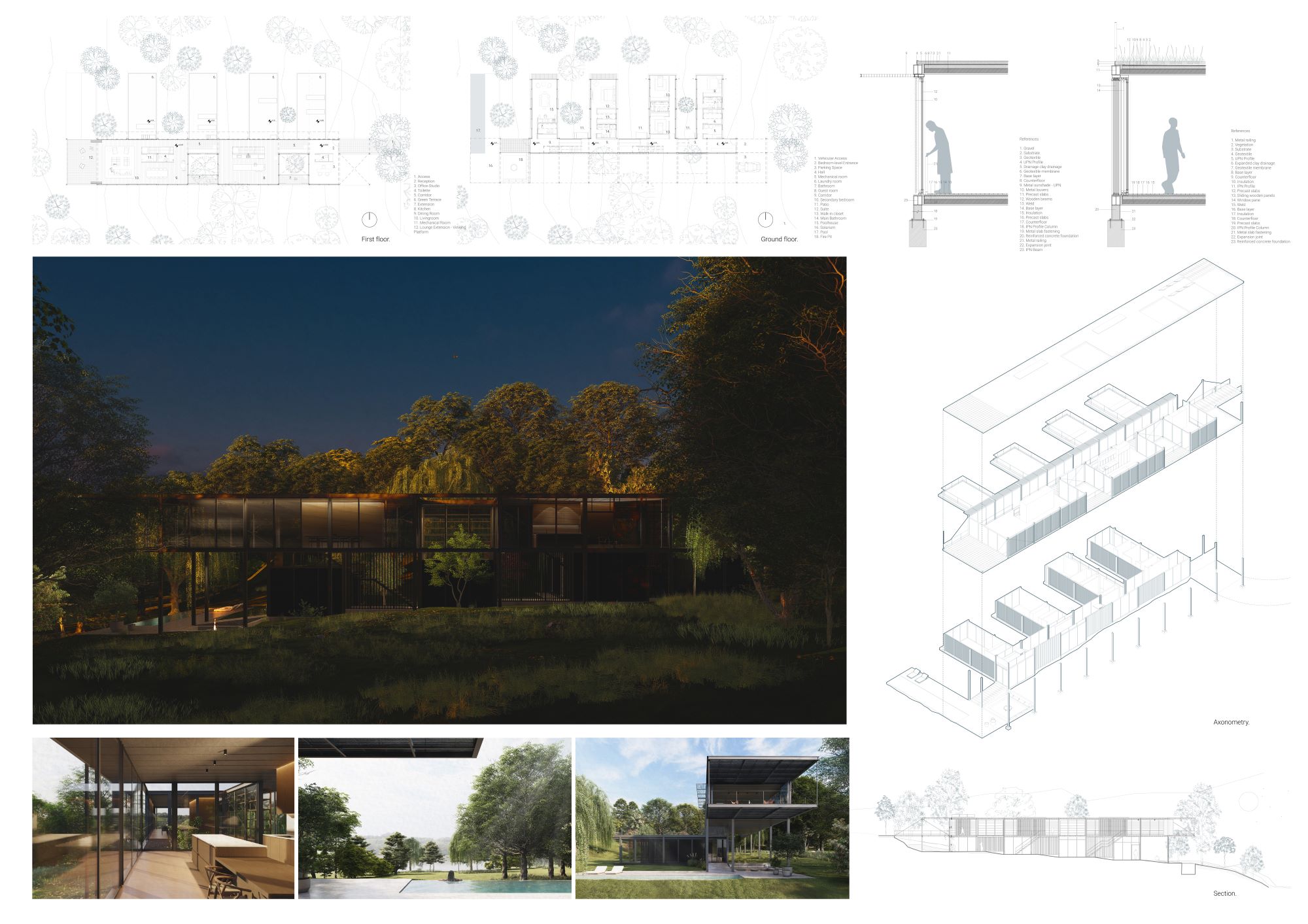CASA MUELLE
There is nothing more beautiful than an untamed landscape, expressing a natural harmony. These settings prompt us to reflect on the impact of architecture on an ecosystem and question how to preserve that beauty while respecting the spirit of a place through subtle, low-impact interventions. In Casa Muelle, we aim to use lightweight and minimally invasive construction systems to ensure precise foundations and careful interaction with the existing flora while reducing the structural load on the land.
The program is organized into two distinct levels. The elevated social volume maintains a constant visual connection with its surroundings, resting lightly on the site to blend with the landscape and, at night, transforming into a beacon from the river. At ground level, the private spaces are divided into separate units that follow the natural slope, generating diverse perspectives and allowing vegetation to embrace the architecture, creating a symbiotic relationship between them.
Accessible green terraces replicate the occupied land, returning what the construction has taken from the site. Meanwhile, the elevation of the main volume frees up a portion of the terrain, minimizing its footprint.
The construction system combines a metallic structure with lightweight prestressed concrete slabs, reducing environmental impact while optimizing execution times. For climate control, sunshades, movable enclosures, and strategically placed windows regulate solar exposure. The cross-ventilation in both the main volume and private spaces, along with a cool roof system, significantly reduces thermal loads, enhancing energy efficiency. Additionally, the integration of solar panels and water recirculation systems promotes a rational use of resources.
In the private units, sliding wooden panels allow for flexible openings, balancing privacy and connection with the surrounding environment. When closed, they create a warm, textural architectural expression that resonates with the landscape.
Casa Muelle lightly settles onto the land while allowing itself to be embraced by nature, establishing a network of intersecting views between the site and the river. The architecture does not impose itself on the landscape; rather, it recognizes, dialogues with, and frames it from multiple perspectives.
The project aspires to convey serenity and a genuine integration with its surroundings. As Luis Barragán once said:
«I do not divide architecture, landscape, and gardening; to me, they are one.»











